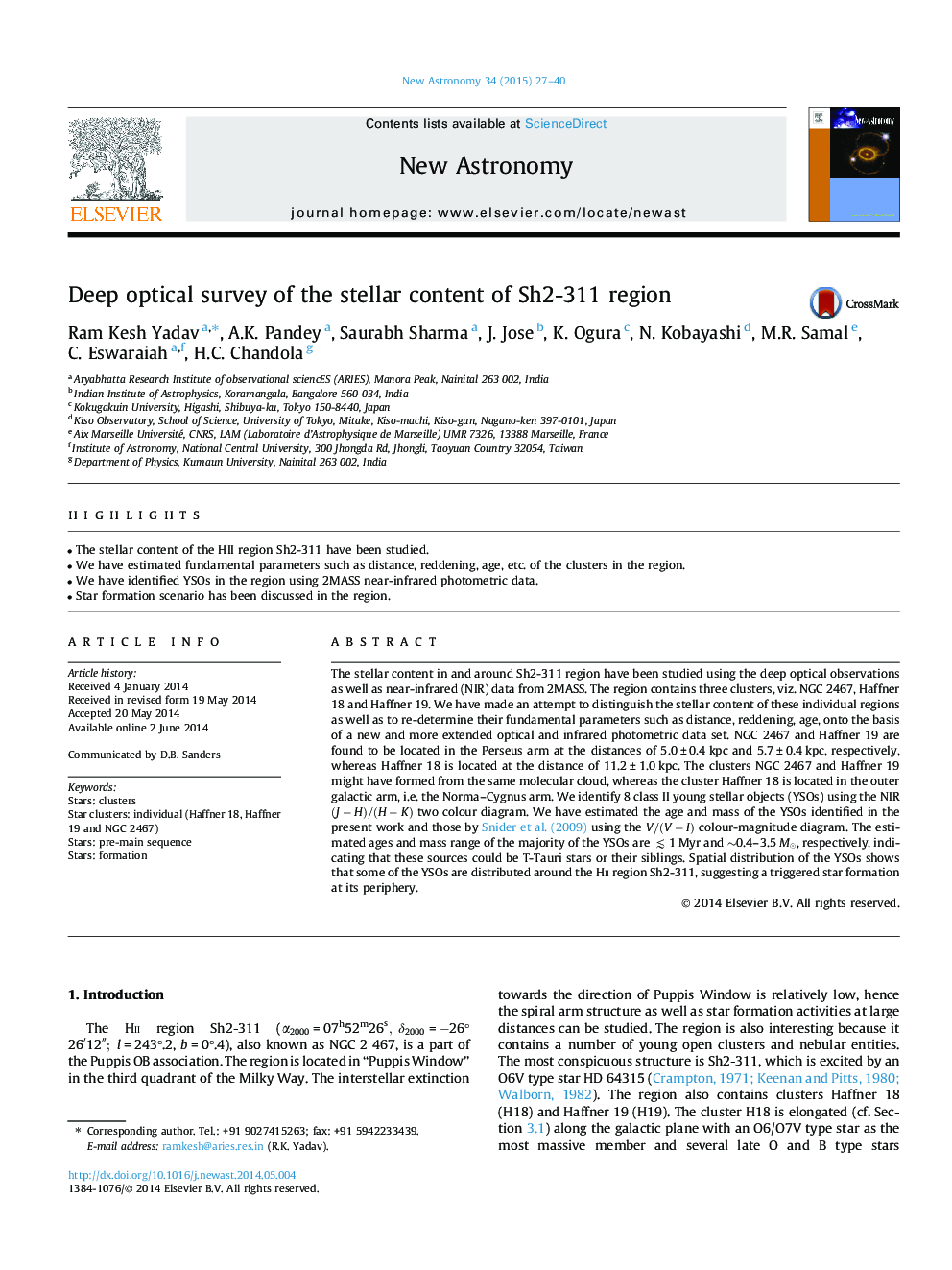| Article ID | Journal | Published Year | Pages | File Type |
|---|---|---|---|---|
| 1778956 | New Astronomy | 2015 | 14 Pages |
•The stellar content of the HII region Sh2-311 have been studied.•We have estimated fundamental parameters such as distance, reddening, age, etc. of the clusters in the region.•We have identified YSOs in the region using 2MASS near-infrared photometric data.•Star formation scenario has been discussed in the region.
The stellar content in and around Sh2-311 region have been studied using the deep optical observations as well as near-infrared (NIR) data from 2MASS. The region contains three clusters, viz. NGC 2467, Haffner 18 and Haffner 19. We have made an attempt to distinguish the stellar content of these individual regions as well as to re-determine their fundamental parameters such as distance, reddening, age, onto the basis of a new and more extended optical and infrared photometric data set. NGC 2467 and Haffner 19 are found to be located in the Perseus arm at the distances of 5.0 ± 0.4 kpc and 5.7 ± 0.4 kpc, respectively, whereas Haffner 18 is located at the distance of 11.2 ± 1.0 kpc. The clusters NGC 2467 and Haffner 19 might have formed from the same molecular cloud, whereas the cluster Haffner 18 is located in the outer galactic arm, i.e. the Norma–Cygnus arm. We identify 8 class II young stellar objects (YSOs) using the NIR (J-H)/(H-K)(J-H)/(H-K) two colour diagram. We have estimated the age and mass of the YSOs identified in the present work and those by Snider et al. (2009) using the V/(V-I)V/(V-I) colour-magnitude diagram. The estimated ages and mass range of the majority of the YSOs are ≲≲1 Myr and ∼0.4–3.5 M⊙M⊙, respectively, indicating that these sources could be T-Tauri stars or their siblings. Spatial distribution of the YSOs shows that some of the YSOs are distributed around the Hii region Sh2-311, suggesting a triggered star formation at its periphery.
